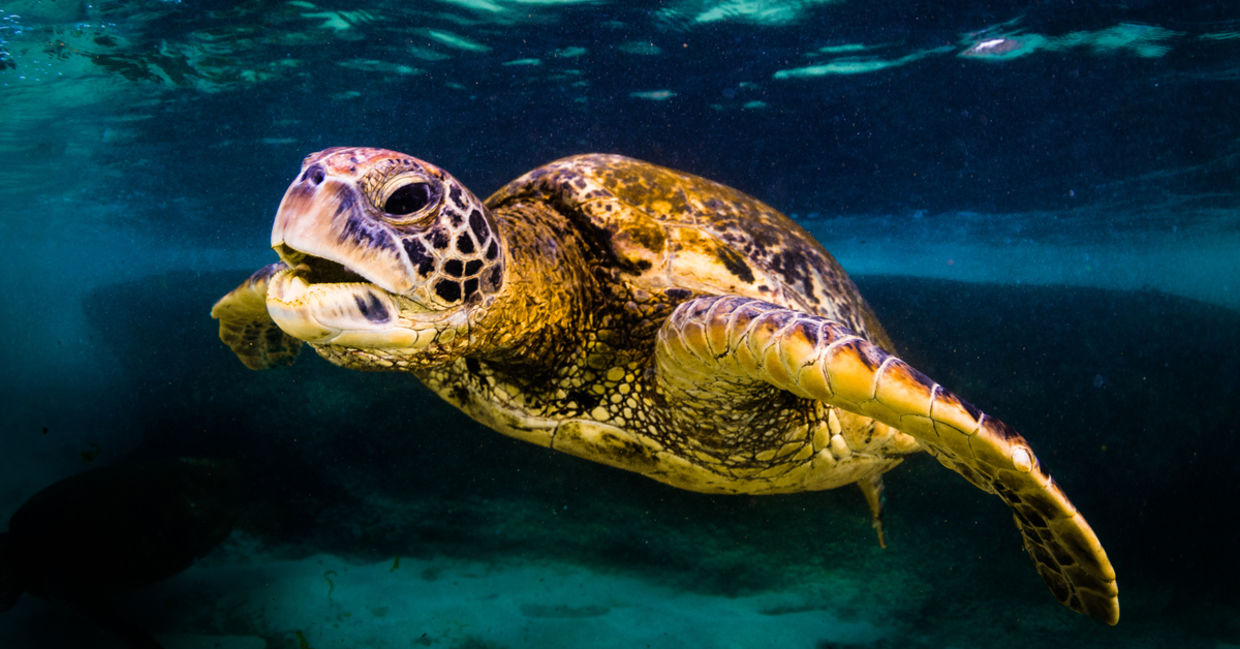
(Shane Myers Photography / Shutterstock.com)
Giant sea turtles live along the coral reefs in the waters around Hawaii, and according to a new sea life survey, they are holding their own or gaining numbers in most spots.
And that is really good news for the formerly endangered species that was once hunted for its meat.
The scientists who conducted the recently published survey believe the numbers are going up because of hunting bans and conservation efforts by the state and US federal governments.
“You often hear such bad and challenging news about the threats that our ocean faces,” Kyle Van Houtan, chief scientist at the Monterey Bay Aquarium in Monterey, California, and leader of the team of researchers that conducted the survey, told NBC News. “There are places where there are a lot of sea turtles very close to shore. And that’s good news.”
The survey was actually almost an accident. The US National Oceanic and Atmospheric Administration was counting fish living on coral reefs, and they started to count the sea turtles too, according to Van Houtan. It seems that counting turtles in the water is much easier than on land.
Van Houtan and his colleagues decided that they would make a formal study and for 13 years, divers that had been trained to count green sea turtles and hawksbills went to 53 reefs across the Pacific totaling more than 450 miles (724,2 kilometers). The team found more than 3,400 turtles.
The research represented a “Herculean effort,” Van Houtan said, adding that “this is the kind of data and the kind of study we’ve wanted for so long.”
Analyzing the survey results of turtle density – the estimated number of turtles per square kilometer – showed that the turtle population increased as much as eight percent per year in some locations. The density increased the most in the Pacific Remote Island areas around Hawaii.
The highest density, according to Van Houtan, was found in regions that had a large amount of seagrass and algae, little human contact, and water temperatures that are 80-82 degrees Fahrenheit (26.6-27.7 Celsius), but these animals may have to relocate due to climate change.
“As the ocean warms with climate change, that ideal temperature is going to move toward the poles and away from the equator,” Van Houtan told NBC. “As the temperatures change, those distributions are going to change.”
Van Houtan doesn't know what a move like this will due to the ecosystem of the coral reefs, but he is optimistic that the turtles will survive saying, “They’re very resilient animals, and they’ve lived for millions of years. The turtles aren’t going to roll over and die.”
YOU MIGHT ALSO LIKE:
An Extinct Rare Giant Tortoise was Found on the Galápagos Islands
Flourishing Communities of Coral Reef Offer a Glimpse of Hope
Why Hawaii Is Trying a Bold Plan to Outlaw Killing Sharks







